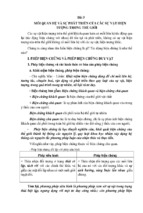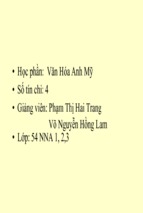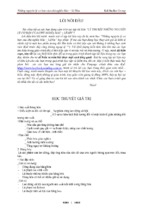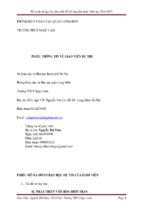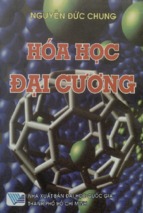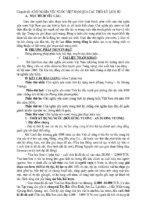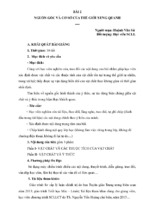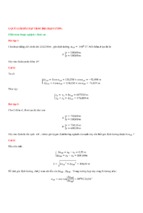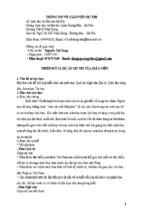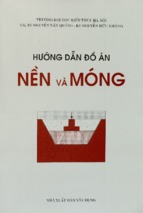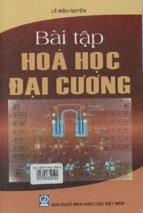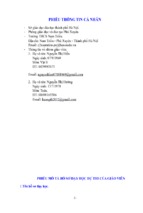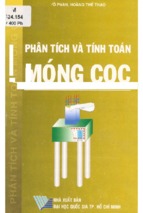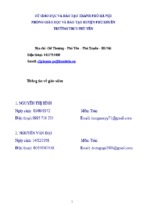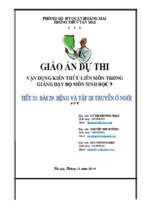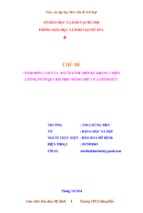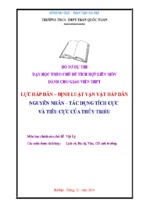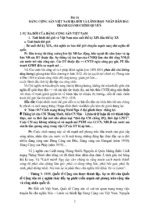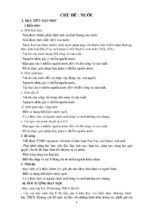Downloaded from ascelibrary.org by RMIT UNIVERSITY LIBRARY on 01/04/19. Copyright ASCE. For personal use only; all rights reserved.
Computing in
Civil Engineering 2017
Smart Safety, Sustainability, and Resilience
Selected Papers from the ASCE International
Workshop on Computing in Civil Engineering 2017
Seattle, Washington
June 25–27, 2017
Edited by Ken-Yu Lin, Ph.D.; Nora El-Gohary, Ph.D.;
and Pingbo Tang, Ph.D., P.E.
Downloaded from ascelibrary.org by RMIT UNIVERSITY LIBRARY on 01/04/19. Copyright ASCE. For personal use only; all rights reserved.
COMPUTING IN CIVIL
ENGINEERING 2017
SMART SAFETY, SUSTAINABILITY, AND RESILIENCE
SELECTED PAPERS FROM THE ASCE INTERNATIONAL
WORKSHOP ON COMPUTING IN CIVIL ENGINEERING 2017
June 25–27, 2017
Seattle, Washington
SPONSORED BY
Computing Division
of the American Society of Civil Engineers
EDITED BY
Ken-Yu Lin, Ph.D.
Nora El-Gohary, Ph.D.
Pingbo Tang, Ph.D., P.E.
1801 ALEXANDER BELL DRIVE
RESTON, VIRGINIA 20191–4400
Downloaded from ascelibrary.org by RMIT UNIVERSITY LIBRARY on 01/04/19. Copyright ASCE. For personal use only; all rights reserved.
Published by American Society of Civil Engineers
1801 Alexander Bell Drive
Reston, Virginia, 20191-4382
www.asce.org/publications | ascelibrary.org
Any statements expressed in these materials are those of the individual authors and do not
necessarily represent the views of ASCE, which takes no responsibility for any statement
made herein. No reference made in this publication to any specific method, product, process,
or service constitutes or implies an endorsement, recommendation, or warranty thereof by
ASCE. The materials are for general information only and do not represent a standard of
ASCE, nor are they intended as a reference in purchase specifications, contracts, regulations,
statutes, or any other legal document. ASCE makes no representation or warranty of any
kind, whether express or implied, concerning the accuracy, completeness, suitability, or
utility of any information, apparatus, product, or process discussed in this publication, and
assumes no liability therefor. The information contained in these materials should not be used
without first securing competent advice with respect to its suitability for any general or
specific application. Anyone utilizing such information assumes all liability arising from such
use, including but not limited to infringement of any patent or patents.
ASCE and American Society of Civil Engineers—Registered in U.S. Patent and Trademark
Office.
Photocopies and permissions. Permission to photocopy or reproduce material from ASCE
publications can be requested by sending an e-mail to
[email protected] or by locating a
title in ASCE's Civil Engineering Database (http://cedb.asce.org) or ASCE Library
(http://ascelibrary.org) and using the “Permissions” link.
Errata: Errata, if any, can be found at https://doi.org/10.1061/9780784480847
Copyright © 2017 by the American Society of Civil Engineers.
All Rights Reserved.
ISBN 978-0-7844-8084-7 (PDF)
Manufactured in the United States of America.
Computing in Civil Engineering 2017
iii
Preface
Downloaded from ascelibrary.org by RMIT UNIVERSITY LIBRARY on 01/04/19. Copyright ASCE. For personal use only; all rights reserved.
Welcome to Seattle, the Emerald City in Washington!
The 2017 ASCE International Workshop on Computing in Civil Engineering
(IWCCE) was held in Seattle from June 25-27, 2017. The workshop was hosted by
the University of Washington with sponsorship from ASCE’s Computing Division.
The workshop is the Computing Division’s major meeting event and is held biannually in the United States, with participation from scholars worldwide.
The workshop has a long history of success and serves as a platform for sharing
research innovation as well as valuable lessons. We introduced several pioneering
changes this year, including the inaugural all-stakeholder meeting for the Computing
Division. We had a strong and engaged Technical Committee which provided
rigorous reviews for the abstracts and full papers, with each submission being
reviewed by at least two members of our Technical Committee.
The 2017 workshop, as a standalone event, received more than 300 abstracts, 184 full
papers, and 32 extended abstracts for the poster and demonstration sessions. The
participation from our growing community has set a record and a total of 162 full
papers were accepted and included in the proceedings. Among these papers, Building
Information Modeling and Civil Information Modeling formed the most popular
technical interests while Energy, Sustainability and Resilience topped the list of
application contexts.
We would like to thank the Department of Construction Management at The
University of Washington for its support of the workshop. We are also grateful for the
guidance from the Computing Division’s Executive Committee and the assistance
from ASCE.
We hope that you enjoyed the technical sessions at the workshop and had a
memorable and meaningful IWCCE experience in Seattle this year.
Ken-Yu Lin, Ph.D.
Chair, Organizing Committee, IWCCE 2017
Nora El-Gohary, Ph.D.
Chair, Technical Committee, IWCCE 2017
Pingbo Tang, Ph.D., P.E.
Vice Chair, Organizing Committee, IWCCE 2017
© ASCE
Computing in Civil Engineering 2017
iv
Acknowledgments
Downloaded from ascelibrary.org by RMIT UNIVERSITY LIBRARY on 01/04/19. Copyright ASCE. For personal use only; all rights reserved.
Special thanks are due to the following individuals at the University of Washington
for their continuous and tireless support throughout the organization of the workshop:
Name
Julie Angeley
Mark Baratta
Brian Vogt
Zhenyu Zhang
Title
IWCCE Local Administrator
IWCCE Local IT Lead
IWCCE Local Web Consultant
IWCCE Secretary
A sincere appreciation goes to the Microsoft Corporation for providing the editors
free access to Microsoft’s Academic Conference Management Service and for
customizing the online platform for the workshop.
The editors would also like to thank the following Technical Committee members for
their assistance and effort with the paper review and selection process:
Name
Abbas Rashidi
Albert Chen
Ali Mostafavi
Amin Hammad
Amir Behzadan
Andre Barbosa
Andre Borrmann
Atefeh Mohammadpour
Auroop R. Ganguly
Baabak Ashuri
Behzad Esmaeili
Bon-Gang Hwang
Brenda McCabe
Burcin Becerik
Carl Haas
Carlos Caldas
Carol Menassa
Changbum Ahn
Chao Wang
Chen Feng
© ASCE
Institution
Georgia Southern University
National Taiwan University
Florida International University
Concordia University
Missouri State University
Oregon State University
The Technical University of Munich
Indiana University-Purdue University Fort Wayne
Northeastern University (United States)
Georgia Institute of Technology
University of Nebraska-Lincoln
National University of Singapore
University of Toronto
University of Southern California
University of Waterloo
University of Texas at Austin
University of Michigan
University of Nebraska-Lincoln
Louisiana State University
Mitsubishi Electric Research Laboratories
Computing in Civil Engineering 2017
Downloaded from ascelibrary.org by RMIT UNIVERSITY LIBRARY on 01/04/19. Copyright ASCE. For personal use only; all rights reserved.
Chien-Cheng Chou
Chimay Anumba
Christian Koch
David Lattanzi
Dong Zhao
Dulcy Abraham
Ebrahim Karan
Eduardo Santos
Esin Ergen
Fadi Castronovo
Farrokh Jazizadeh
Fei Dai
Feng Li
Fernanda Leite
Frank Boukamp
Frederic Bosche
Guangbin Wang
Hanbin Luo
Hubo Cai
Ian Smith
Ioannis Brilakis
Islam El-adaway
Ivan Mutis
Jack Cheng
Jiansong Zhang
Jiayu Chen
Jie gong
Jing Du
Jinyue Zhang
John Messner
John Taylor
Jun Yang
Justin Ker-Wei Yeoh
Koji Makanae
Lu Zhang
Lucio Soibelman
Mani Golparvar-Fard
Mario Berges
Menghan Tsai
Michael Olsen
Ming Lu
© ASCE
v
National Central University (Taiwan)
University of Florida
University of Nottingham
George Mason University
Michigan State University
Purdue University
Millersville University
University of Sao Paulo
Istanbul Technical University
California State University East Bay
Virginia Tech
West Virginia University
Research Institute of Highway (China)
University of Texas at Austin
Royal Melbourne Institute of Technology
Heriot-Watt University
Tongji University
Huazhong University of Science and Technology
Purdue University
Ecole Polytechnique Federale (Switzerland)
Cambridge University
University of Tennessee
Illinois Institute of Technology
Hong Kong University of Science and Technology
Western Michigan University
City University of Hong Kong
Rutgers University
Texas A&M University
Tianjin University
Penn State University
Georgia Tech
Northwestern Polytechnical University (China)
National University of Singapore
Miyagi University
Florida International University
University of Southern California
University of Illinois at Urbana-Champaign
Carnegie Mellon University
National Taiwan University
Oregon State University
University of Alberta
Computing in Civil Engineering 2017
Downloaded from ascelibrary.org by RMIT UNIVERSITY LIBRARY on 01/04/19. Copyright ASCE. For personal use only; all rights reserved.
Mounir El Asmar
Nai-Wen Chi
Nan Li
Nipesh Pradhananga
Nobuyoshi Yabuki
Omar El-Anwar
Oswald Chong
Paul Goodrum
Pin-Chao Liao
Ray Issa
Renate Fruchter
Ren-Jye Dzeng
Reza Akhavian
Rishee Jain
Robert Amor
Rucheng Xiao
Rui Liu
Saiedeh Razavi
Sanghoon Lee
SangHyun Lee
SangUk Han
Semiha Ergan
Seokho Chi
Shang-Hsien Hsieh
Sheryl Staub-French
Steven Ayer
Takashi Michikawa
Tamer El-Diraby
Timo Hartmann
Walid Tizani
Wen Xiong
Xiangyu Wang
Xianzhong Zhao
Xiaowei Luo
Xiaolong Xue
Xuesong Liu
Xuesong Shen
Yelda Turkan
Yimin Zhu
Ying Zhou
Yong Cho
© ASCE
vi
Arizona State University
National Taiwan University
Tsinghua University
Florida International University
Osaka University
Cairo University
Arizona State University
University of Colorado at Boulder
Tsinghua University
University of Florida
Stanford University
National Chiao-Tung University
California State University East Bay
Stanford University
University of Auckland
Tongji University
University of Florida
McMaster University
University of Hong Kong
University of Michigan
University of Alberta
New York University
Seoul National University
National Taiwan University
University of British Columbia
Arizona State University
RIKEN
University of Toronto
Technical University of Berlin
University of Nottingham
Southeast University
Curtin University
Tongji University
City University of Hong Kong
Harbin Institute of Technology
Carnegie Mellon University
University of New South Wales
Oregon State University
Louisiana State University
Huazhong University of Science and Technology
Georgia Institute of Technology
Computing in Civil Engineering 2017
Downloaded from ascelibrary.org by RMIT UNIVERSITY LIBRARY on 01/04/19. Copyright ASCE. For personal use only; all rights reserved.
Youngjib Ham
Yunfeng Chen
Zhenhua Zhu
Zheng Yang
Zhiliang Ma
vii
Florida International University
Georgia Southern University
Concordia University
Stanford University
Tsinghua University
Finally, the editors would also like to thank the following Poster and Demonstration
Organization Committee members for their help with the related review process:
Name
Cheng Zhang
Hamid Abdirad
Jiawei Chen
Kadir Amasyali
Kaijian Liu
Lufan Wang
Luming Shang
Vamsi Sai Kalasapudi
Xuan Lv
Zhenyu Zhang
© ASCE
Institution
Arizona State University
University of Washington
Arizona State University
University of Illinois at Urbana-Champaign
University of Illinois at Urbana-Champaign
University of Illinois at Urbana-Champaign
University of Washington
Arizona State University
University of Illinois at Urbana-Champaign
University of Washington
Computing in Civil Engineering 2017
viii
Contents
Downloaded from ascelibrary.org by RMIT UNIVERSITY LIBRARY on 01/04/19. Copyright ASCE. For personal use only; all rights reserved.
Computing for Human Factors
Post-Simulation Visualization of Construction Manual Operations
Using Motion Capture Data ....................................................................................... 1
Alireza Golabchi, SangUk Han, and Simaan AbouRizk
The Impact of Engineering Information Formats on Craft Worker Eye
Gaze Patterns .............................................................................................................. 9
Omar F. Alruwaythi, Matthew H. Sears, and Paul M. Goodrum
Towards an Occupancy-Enhanced Building HVAC Control Strategy Using
Wi-Fi Probe Request Information .......................................................................... 17
Xuan Li, Xuesong Liu, and Zhen Qian
A Real-Time Emergency Evacuation Management System (REEMS) Using
Indoor Localization Technology .............................................................................. 25
Faxi Yuan and Rui Liu
Construction Management
Investigating the Performance of Relational Contracts Using Social
Network Analysis ...................................................................................................... 34
Mahmoud M. Abd El-Moneim, Omar H. El-Anwar, and Islam H. El-Adaway
Performance Analysis of a Probabilistic Local Search Algorithm for
Indoor Tracking ........................................................................................................ 43
JeeWoong Park and Yong K. Cho
BIM-Based Life Cycle Assessment and Costing of Buildings: Current
Trends and Opportunities ........................................................................................ 51
M. N. Nwodo, C. J. Anumba, and S. Asadi
Construction Method Models Using Context Aware Construction
Requirements for Automated Schedule Generation ............................................. 60
Justin K. W. Yeoh, T. Q. Nguyen, and Ernest L. S. Abbott
Decision Support for Test Trench Location Selection with 3D Semantic
Subsurface Utility Models ........................................................................................ 68
P. Racz, L. Syfuss, C. Schultz, M. van Buiten, L. olde Scholtenhuis,
F. Vahdatikhaki, and A. Dorée
© ASCE
Computing in Civil Engineering 2017
ix
Mixed Reality for Electrical Prefabrication Tasks ................................................ 76
Jad Chalhoub and Steven K. Ayer
Downloaded from ascelibrary.org by RMIT UNIVERSITY LIBRARY on 01/04/19. Copyright ASCE. For personal use only; all rights reserved.
Long Term Change Pattern Analysis of Bidding Price Based on
Non-Parametric Framework ................................................................................... 84
Yang Cao and Baabak Ashuri
Construction Work Plan Prediction for Facility Management Using Text
Mining ........................................................................................................................ 92
Yunjeong Mo, Dong Zhao, Matt Syal, and Azizan Aziz
Towards Developing an Ontology for Earthwork Operations ........................... 101
Alhusain Taher, Faridaddin Vahdatikhaki, and Amin Hammad
Model-Driven Visual Data Capture on Construction Sites:
Method and Metrics of Success ............................................................................. 109
Amir Ibrahim, Mani Golparvar-Fard, Timothy Bretl, and Khaled El-Rayes
An Interactive Model-Driven Path Planning and Data Capture System for
Camera-Equipped Aerial Robots on Construction Sites .................................... 117
Amir Ibrahim, Dominic Roberts, Mani Golparvar-Fard, and Timothy Bretl
Developing a Satisfactory Input for Project Complexity Model Using
Principal Component Analysis (PCA) .................................................................. 125
Bac Dao, Stuart Anderson, and Behzad Esmaeili
Single Tower Crane Allocation Using Ant Colony Optimization ...................... 132
Carlos Trevino and Mohamed Abdel-Raheem
Potential of Convolutional Neural Network-Based 2D Human Pose
Estimation for On-Site Activity Analysis of Construction Workers.................. 141
Meiyin Liu, SangUk Han, and SangHyun Lee
Error Quantification and Visualization in Using Sensors to Position
Backhoe Excavator ................................................................................................. 150
Monjurul Hasan and Ming Lu
Measuring the Impact of Working Memory Load on the Safety
Performance of Construction Workers ................................................................ 158
Sogand Hasanzadeh, Bac Dao, Behzad Esmaeili, and Michael D. Dodd
Crowdsourcing and Citizen Science
Visual Awareness on Surface Flow Measurement ............................................... 167
Yao-Yu Yang and Shih-Chung Kang
© ASCE
Computing in Civil Engineering 2017
x
Imagery-Based Risk Assessment Using Crowdsourcing Technology in
Complex Workspaces ............................................................................................. 174
Cheng Zhang, Pingbo Tang, Pin-Chao Liao, and Yi Ren
Downloaded from ascelibrary.org by RMIT UNIVERSITY LIBRARY on 01/04/19. Copyright ASCE. For personal use only; all rights reserved.
Effects of Physical Disorders in Neighborhoods on Pedestrians’
Physiological Responses ......................................................................................... 183
Mohammad Bisadi, Hyunsoo Kim, Changbum R. Ahn, and Yunwoo Nam
Energy, Sustainability, and Resilience
Analysis of Delay Interval and Energy-Load Variation for Non-Intrusively
Extracting Occupant Energy-Use Information in Commercial Buildings ........ 191
Hamed Nabizadeh Rafsanjani, Changbum Ahn, and Jiayu Chen
Modelling the Dynamic Interaction between Building Performance and
Occupant Well-Being.............................................................................................. 198
Flavia Grey and Renate Fruchter
An Occupant-Centered Integrated Lighting and Shading Control for
Energy Saving and Individual Preferences .......................................................... 207
Ting-Chun Kuo, Ying-Chieh Chan, and Albert Y. Chen
Stochastic Optimization Model for Sustainable Water Treatment with
Minimal Energy Use ............................................................................................... 215
Jacob Blackwood, Ebrahim Karan, Somayeh Asadi, Atefeh Mohammadpour,
and Sadegh Asgari
Probabilistic Building Energy Performance Analysis of
Ultra-High-Performance Fiber-Reinforced Concrete (UHP-FRC)
Façade System ......................................................................................................... 223
S. M. Shahandashti, B. Abediniangerabi, B. Bell, and S. H. Chao
Identifying Critical Links in Water Supply Systems Subject to Various
Earthquakes to Support Inspection and Renewal Decision Making ................. 231
B. Pudasaini, S. M. Shahandashti, and M. Razavi
Data Sensing Approaches to Monitoring Building Energy Use and
Occupant Behavior ................................................................................................. 239
Yewande S. Abraham, Chimay J. Anumba, and Somayeh Asadi
Big Buildings and Big Data: Do Energy Disclosure Policies Impact Energy
Use over Time? ........................................................................................................ 248
Sokratis Papadopoulos and Constantine E. Kontokosta
© ASCE
Computing in Civil Engineering 2017
xi
Emergence of Resilience from Infrastructure Dynamics:
A Simulation Framework for Theory Building ................................................... 256
Kambiz Rasoulkhani, Maria Presa Reyes, and Ali Mostafavi
Downloaded from ascelibrary.org by RMIT UNIVERSITY LIBRARY on 01/04/19. Copyright ASCE. For personal use only; all rights reserved.
Resilience Strategies for Interdependent Multiscale Lifeline Infrastructure
Networks .................................................................................................................. 265
Lina Sela, Udit Bhatia, Janice Zhuang, and Auroop Ganguly
Latent Relationship between Construction Cost and Energy Efficiency in
Multifamily Green Buildings ................................................................................. 273
Yunjeong Mo, Dong Zhao, Andrew McCoy, Jing Du, and Philip Agee
Spatially Constrained Decentralization of Urban Energy Supply Driven by
Fluctuations in Human Mobility ........................................................................... 281
Neda Mohammadi and John E. Taylor
Simulation-Based Optimization of Building Renovation Considering
Energy Consumption and Life-Cycle Assessment ............................................... 288
Seyed Amirhosain Sharif and Amin Hammad
An Ontology to Support the Move towards Sustainable Construction in
Saudi Arabia............................................................................................................ 296
Abdulmajeed Howsawi and Jiansong Zhang
Mapping Wind Energy Potential in New York City Using Geographic
Information System Platform and Semi-Analytical Methods ............................ 304
Samaneh Gholitabar and Fletcher H. Griffis
Non-Intrusive Detection of Respiration for Smart Control of HVAC
System ...................................................................................................................... 310
Wooyoung Jung and Farrokh Jazizadeh
Multi-Scale Modeling of a 500-Year CSZ Tsunami Inundation with
Constructed Environment...................................................................................... 318
Xinsheng Qin, Michael R. Motley, Randall J. LeVeque, and Frank I. Gonzalez
Project Planning and Control
Sound Recognition Techniques for Multi-Layered Construction
Activities and Events .............................................................................................. 326
Chunhee Cho, Yong-Cheol Lee, and Tianyi Zhang
Architectural Freedom in Spite of Precast Elements: An Integrated
Optimization Approach.......................................................................................... 335
K. Klemt-Albert, P. Hagedorn, and T. Pullmann
© ASCE
Computing in Civil Engineering 2017
xii
Integrating Highway Projects Data in GIS for Maintenance and
Rehabilitation Planning: Applications, Challenges, and Recommendations .... 343
Jojo France-Mensah, Bharathwaj Sankaran, and William J. O’Brien
Downloaded from ascelibrary.org by RMIT UNIVERSITY LIBRARY on 01/04/19. Copyright ASCE. For personal use only; all rights reserved.
Acoustical Modeling of Construction Jobsites: Hardware and Software
Requirements .......................................................................................................... 352
C. F. Cheng, A. Rashidi, M. A. Davenport, D. V. Anderson, and C. A. Sabillon
AEC Project Performance Prediction and Validation Using the Artificial
Neural Network ....................................................................................................... 360
Ivan Leung, Min Song, and Calvin Kam
Sensor-Based Resource Tracking for Monitoring the Progress of Rebar
Installation ............................................................................................................... 368
Gursans Guven and Esin Ergen
Automation of Project Planning and Resource Scheduling on a Rough
Grading Project ...................................................................................................... 376
D. Li, C. Yi, and M. Lu
Smart Safety and Health
A Comprehensive Spatio-Temporal Network-Based Model for Dynamic
Risk Analysis on Struck-by-Equipment Hazard ................................................. 384
Jun Wang and Saiedeh Razavi
Feasibility of a Drone-Based On-Site Proximity Detection in an
Outdoor Construction Site ..................................................................................... 392
D. Kim, K. Yin, M. Liu, S. Lee, and V. R. Kamat
Gazetteers for Information Extraction Applications in Construction Safety
Management ............................................................................................................ 401
Nai-Wen Chi, Ken-Yu Lin, Nora El-Gohary, and Shang-Hsien Hsieh
An Ensemble Approach for Classification of Accident Narratives.................... 409
C. U. Ubeynarayana and Y. M. Goh
Investigation of the Relationship between Construction Workers’
Psychological States and Their Unsafe Behaviors Using Virtual
Environment-Based Testing .................................................................................. 417
Yantao Yu, Jiansong Zhang, and Hongling Guo
Enhancing Motion Trajectory Prediction for Site Safety by
Incorporating Attitude toward Risk ..................................................................... 425
Khandakar M. Rashid and Amir H. Behzadan
© ASCE
Computing in Civil Engineering 2017
Construction Productivity and Ergonomic Assessment Using Mobile
Sensors and Machine Learning ............................................................................. 434
Nipun D. Nath and Amir H. Behzadan
Downloaded from ascelibrary.org by RMIT UNIVERSITY LIBRARY on 01/04/19. Copyright ASCE. For personal use only; all rights reserved.
Detecting and Classifying Cranes Using Camera-Equipped UAVs for
Monitoring Crane-Related Safety Hazards.......................................................... 442
Dominic Roberts, Timothy Bretl, and Mani Golparvar-Fard
Joint Reasoning of Visual and Text Data for Safety Hazard Recognition ........ 450
Shuai Tang and Mani Golparvar-Fard
Analyzing Spatial Patterns of Workers’ Gait Cycles for Locating Latent
Fall Hazards ............................................................................................................ 458
Kanghyeok Yang, Changbum Ahn, Mehmet C. Vuran, and Hyunsoo Kim
© ASCE
xiii
Computing in Civil Engineering 2017
Post-Simulation Visualization of Construction Manual Operations Using Motion
Capture Data
Alireza Golabchi1; SangUk Han2; and Simaan AbouRizk3
1
Downloaded from ascelibrary.org by RMIT UNIVERSITY LIBRARY on 01/04/19. Copyright ASCE. For personal use only; all rights reserved.
Ph.D. Candidate, Dept. of Civil and Environmental Engineering, Univ. of Alberta,
9211 116th St., Edmonton, AB, Canada T6G 1H9. E-mail:
[email protected]
2
Assistant Professor, Dept. of Civil and Environmental Engineering, Hanyang Univ.,
222
Wangsimni-ro,
Seongdong-gu,
Seoul
133-791,
Korea.
E-mail:
[email protected]
3
Professor, Dept. of Civil and Environmental Engineering, Univ. of Alberta, 9211
116th St., Edmonton, AB, Canada T6G 1H9. E-mail:
[email protected]
Abstract
Considering the significant proportion of manual operations in the construction
industry, effective monitoring and control of manual activities through modeling and
visualization can play a critical role in improving productivity and safety of projects.
Furthermore, using motion capture data to visualize worker movements, as part of the
virtual representation of a workplace, can be highly beneficial for applications
pertaining to analysis of human motions. Thus, this study proposes a post-simulation
visualization framework, which uses automated creation of motion capture data, to
provide a reliable and realistic representation of manual operations. The approach has
been implemented on a manual task, and the results confirm its effectiveness in
enabling an easy to use modeling of manual activities for various visualization
applications.
INTRODUCTION
Simulation modeling is a powerful tool for analysis of construction operations, as it
allows the representation of actual, large-scale projects as manageable computer
models. Considering the complexity of construction projects, simulation has been
used for various construction applications from the conception phase to operation and
maintenance (Lee et al. 2013). Considering the critical role of labor as a primary
resource in the construction industry (Jarkas and Bitar 2011), effective modeling and
scheduling of manual operations can be highly beneficial for improving productivity
and safety of projects. Thus, simulation modeling can be adapted to represent existing
and non-existing manual activities, obtain a reliable estimation of duration of manual
operations, evaluate different scenarios of carrying out manual tasks, and assess the
level of efficiency and safety of processes.
Despite the effectiveness of simulation in modeling manual operations, in
practice, its implementation and interpretation may be difficult to adapt for all team
members and decision-makers, as the provided information may not be adequately
detailed (Han et al. 2012). This issue can be resolved by using visualization in
© ASCE
1
Computing in Civil Engineering 2017
Downloaded from ascelibrary.org by RMIT UNIVERSITY LIBRARY on 01/04/19. Copyright ASCE. For personal use only; all rights reserved.
conjunction with simulation (Kamat and Martinez 2001) to provide information that
is easy to understand for all project participants, to prevent misunderstandings of
workplace and process designs, to facilitate implementation of operation designs, and
to detect errors and collisions.
In addition to the aforementioned advantages, using visualization of manual
construction operations allows for the incorporation of human motion capture data
into the workplace design process, which can be highly effective for ergonomic safety
evaluation, realistic animation of manual activities, and worker training. Despite the
various benefits of using motion capture data, due to issues such as lack of
knowledge regarding the generation and use of motion data for analysis, potential
cost of required equipment, software, and training of personnel, and lack of tools and
methods for conveniently implementing motion analysis, less attention has been
given to adapting it in construction practice.
Thus, this study proposes a post-simulation visualization framework for
manual construction operations, which uses motion capture data to provide a reliable
and realistic representation of manual tasks. The proposed approach aims to enable
simplified and effective simulation and visualization, which can be used by
construction practitioners to improve the process of workplace design and facilitate
efficiency and safety analysis of manual operations.
RESEARCH FRAMEWORK
The framework for visualizing manual operations using motion capture data is shown
in Figure 1. A simulation model that represents the motions carried out to complete a
manual task is first created. This modeling is enabled by incorporating Predetermined
Motion Time Systems (PMTS) into a discrete event simulation environment (detailed
descriptions can be found in Golabchi et al. (2016b) and Golabchi et al. (2015c)). The
Special Purpose Simulation (SPS) template containing the modeling elements
representing worker motions, developed in Simphony (Hajjar and AbouRizk 1999),
can also include an ergonomic evaluation of the motions (Golabchi et al. 2015a). The
modeling elements of a simulation model created using the SPS template represent
different motions and tasks (e.g., walk, get object, carry object) and can be built using
simple design data (e.g., walking distances, approximate shape and weight of object).
© ASCE
2
Computing in Civil Engineering 2017
3
Downloaded from ascelibrary.org by RMIT UNIVERSITY LIBRARY on 01/04/19. Copyright ASCE. For personal use only; all rights reserved.
Motion
Database
Simulation
- Activity sequence
- Task requirements
- Operation methods
- Labor resources
Human
Model
Visualization
- Workplace design
- Worker motions
- Process animation
- Resource interaction
BIM / CAD
- Site layout
- Equipment
- Material
- Tools
Figure 1. Framework of simulation-based visualization of manual operations.
After running the simulation model, a trace message is generated that contains
information regarding the motions that are carried out, the sequence of actions, and
the time of each event. This information is used as the input of an algorithm, which is
connected to a motion capture database. Figure 2 shows the pseudo code of the
algorithm. Based on the sequence of activities, the algorithm queries motions from
the appropriate motion database and connects them together to create the full motion.
A motion database exists for each type of motion, which is based on motion classes of
the PMTS used in the simulation. For example, for the get motion, which represents
the task of grasping an object, the database includes grasping motions with different
types of grasps and different start and end locations. These motions are created
previously using motion sensors (e.g., Microsoft Kinect), are stored in the
corresponding database in the BVH format, and are appropriately tagged to enable
querying. Using the input from the simulation model, the algorithm generates the
final motion from the databases of basic motions.
© ASCE
Computing in Civil Engineering 2017
4
Downloaded from ascelibrary.org by RMIT UNIVERSITY LIBRARY on 01/04/19. Copyright ASCE. For personal use only; all rights reserved.
Load motion databases
Read input (trace message from simulation)
For all motions in input
If motion is GET
New motion = old motion + GET
Else if motion is PUT
New motion = old motion + PUT
…
End if
End for
Save final motion
Figure 2. Pseudo code of algorithm.
After the final motion is created, it is saved as a BVH file. To bring this motion to the
visualization environment, it must be added to a human mesh. The worker model,
with the motion attached to it, is then imported into the final virtual model. This
virtual model also includes 3D models of the workplace, including equipment, tools,
and structures, and, for accurate representation, can potentially be extracted from the
Building Information Model (BIM) (Golabchi et al. 2015b) or from point cloud
models of the jobsite (Golabchi et al. 2016a). After importing the worker model, start
and end positions of the motion must be set to match the position of the worker with
the location of objects in the virtual model. Implementation of the process is detailed
in the following section.
IMPLEMENTATION
The proposed framework is implemented on a simple manual task to demonstrate its
functionality. The sequence of activities includes walking 3 meters, grasping an
object from the floor, walking 4 meters, placing the object on a table, and walking 2
meters. As the first step, the simulation model is created in the Symphony modeling
© ASCE
Computing in Civil Engineering 2017
5
environment. The MODAPTS (Heyde 1966) standard is used as the PMTS system
incorporated into the simulation, although any other PMTS may be similarly used.
The model and the inputs required for the various modeling elements are shown in
Figure 3. As shown in the figure, the required inputs include simple workplace
attributes that are available when designing or redesigning a workplace.
Downloaded from ascelibrary.org by RMIT UNIVERSITY LIBRARY on 01/04/19. Copyright ASCE. For personal use only; all rights reserved.
Walk distance: 3 m
Get condition: simple grasp
Load: 4 kg
Move distance: 18 in
Move distance: 12 in
Walk distance: 4 m
Move distance: 18 in
Move distance: 12 in
Put condition: exact location
Walk distance: 2 m
Figure 3. Simulation model with required inputs.
After running the simulation model, a trace message that includes the name and type
of each motion, along with the time that it is carried out, is generated. This
information is input into the algorithm (code developed in MATLAB) and the BVH
motion file is compiled using the database of prerecorded BVH basic motions, as
previously described. The final BVH motion then needs to be attached to the worker
mesh, as shown in Figure 4. In this study, Autodesk MotionBuilder is used for this
purpose. As shown in the figure, the biped character and the BVH motion are separate
when imported, and a mapping of body joints must be completed for synchronization.
This is achieved by adding a character to the scene, selecting different body joints on
the skeleton from the BVH motion, and adding them to the corresponding mapping
list of the character in the character definition window. This character can then be
used as the source of the worker mesh. At this point, the mesh and the motion are
connected and can be exported in the FBX format to insert into the virtual model. It is
advised that the character and the first frame of the BVH file be in the T-pose to
achieve correct mapping.
© ASCE
Downloaded from ascelibrary.org by RMIT UNIVERSITY LIBRARY on 01/04/19. Copyright ASCE. For personal use only; all rights reserved.
Computing in Civil Engineering 2017
Figure 4.. Linking BV
VH motion to worker m
mesh.
Thee 3D model of the workp
place and th
he worker moodel and mootions must bbe imported
into
o a 3D modeeling enviro
onment platfo
form for inteegration. Thee Autodesk 3ds Max is
useed in this stu
udy, as it enaables effectiv
ve importingg of BIM andd CAD moddels, as well
as worker
w
mod
del and motions. The BIIM model iss first importted into 3dss Max as an
FBX
X file, and all necessary
y 3D modells that are nnot availablee in the BIM
M model are
sub
bsequently ad
dded. The worker
w
motion is also impported as an FBX file. A
At this stage,
the start and en
nd point of motions
m
musst be appointted in the 3D
D model to aanimate the
worrker motion in the correect location of the 3D m
model. This iis achieved bby defining
anim
mation keyss in the appro
opriate fram
mes of the mootion animattion in the trrack bar. At
thiss stage, the virtual mo
odel is com
mplete and rready to usse. Figure 5 illustrates
snaapshots of a virtual mod
del in 3ds Max, where a BIM model is first impported from
Auttodesk Reviit, 3D modeels of equipm
ment and m
material are added, and the worker
model and motion are also imported.
Figure 5.
5 Virtual model
m
with w
worker motiions.
© ASCE
6

